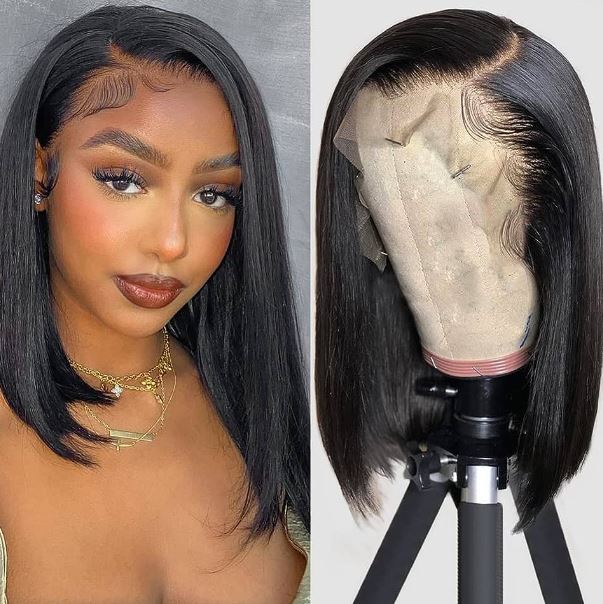Human hair wig Extensions, Does the Country of Origin Matter?

Adding hair extensions is a growing trend that allows people to change up their look with longer, thicker, or different colored hair without long-term commitments like perms or coloring. However, just like many other products, the quality and source of the human hair used in extensions can vary greatly depending on where it comes from. Here is an in-depth look at some key countries of origin for human hair used in extensions and why it matters.
India
-
India is one of the largest exporters of human hair in the world and supplies a significant portion of hair used for extensions globally. Hair sourced from India is often the most affordable option. However, there are some downsides to consider as well. In some cases, hair has been obtained unethically or against the consent of donors in India. Reports have surfaced of women and girls having their hair cut or shaved against their will while sleeping.
-
While hair trade in India is now regulated, oversight and enforcement can still be inconsistent in remote areas. There are also concerns about hygiene and cleaning standards. Hair from India is more likely to retain product buildup and residues from chemical processes like straightening than hair from countries with stricter regulations. Proper cleaning and preparation of Indian hair for use in extensions requires more effort from the manufacturer or stylist.
-
Overall, Indian hair can work well for extensions if obtained ethically and properly processed. However, unverified sources leave potential quality and ethical questions. Buyers often have little visibility into the origins and handling of hair from India.
China
-
China is another major exporter of human hair, though on a smaller scale than India. Hair sourced from China tends to be of moderate quality and price. While donation and collection practices are regulated, there continue to be allegations of coercion or improper obtaining of hair from prisoners or disadvantaged groups in some cases.
-
Hygiene and processing standards in China have improved but still lag Western nations in some areas. Hair may not be as thoroughly cleaned and require additional conditioning treatments before use. Strength and luster also tends to be slightly less than top-grade sources.
-
Chinese hair extensions can last for several months with proper care. However, buyers should research manufacturers and avoid suppliers without transparency about sourcing locations and practices when possible due to lingering ethical concerns in limited areas.
Eastern Europe
-
Countries like Ukraine, Russia, and Belarus have become desirable sources of high-quality human hair in recent years. Hair from Eastern Europe is known for its thickness, strength, shine, and versatility. It accepts color changes and styles well while retaining condition over time.
-
Collection and donation of hair in Eastern Europe is strictly regulated and typically obtained through licensed salons from voluntary donors. Standards for hygiene, traceability, and oversight of the hair trade also meet international requirements.
-
Hair from Eastern Europe often fetches higher prices than Asian sources but provides excellent longevity and results for customers. Reputable Eastern European suppliers can verify donor consent and full trackability of hair from collection to processing. This peace of mind comes at a moderate premium but ensures only ethical practices were followed from donation to the final product.
United States & Europe
-
Domestically sourced or European hair is often considered the gold standard for excellence by stylists and extension connoisseurs. Regulations are world-leading in countries like the US, UK, and Germany regarding donor consent, hygiene, traceability and quality control throughout the supply chain.
-
However, national sources also come at higher expense due to smaller collection volumes relative to Asian export powerhouses and stringent production standards. US and European hair may cost 2-3 times as much as a comparable bundle from India or China.
-
The benefits are hard to match luster, strength, and softness. Hair takes coloring beautifully and retains condition through many uses and styling sessions. Top brands and salons will use primarily local or European hair to ensure zero ethical doubts or health risks for clients.
-
For those who can afford it, domestically sourced or European grade extensions treat hair to the gold standard in quality, longevity and peace of mind. The cost premium buys tremendous reliability and versatility for lasting, damage-free results.
Overall, country of origin absolutely influences the quality, ethics and value of hair used in extensions. Budget, priority of traits like strength vs. shine, and comfort level with sourcing practices factor into optimal choices.
For most wearers, hair from Eastern Europe presents the best combination of affordability, excellence and verified ethical sourcing available on a global scale today. Domestic and European supplies remain best-in-class but come at a higher price tag.
Indian and Chinese hair can work well when from vetted, transparent suppliers adhering to processing and handling best practices. However, lack of full visibility leaves more risks versus higher-regulated alternatives. Taking origin and associated impacts into account helps find the best value and experience for each individual's needs and standards.
In summary, knowing what standards and practices different countries follow regarding hair collection, trade oversight and final product handling allows a more informed choice when selecting extensions. While cost is a primary consideration, ensuring quality, ethics and peace of mind are important aspects for evaluating hair of various country origins used in today's market. With so many options, taking the time for research pays off in beautiful, long-lasting results from human hair extensions.
